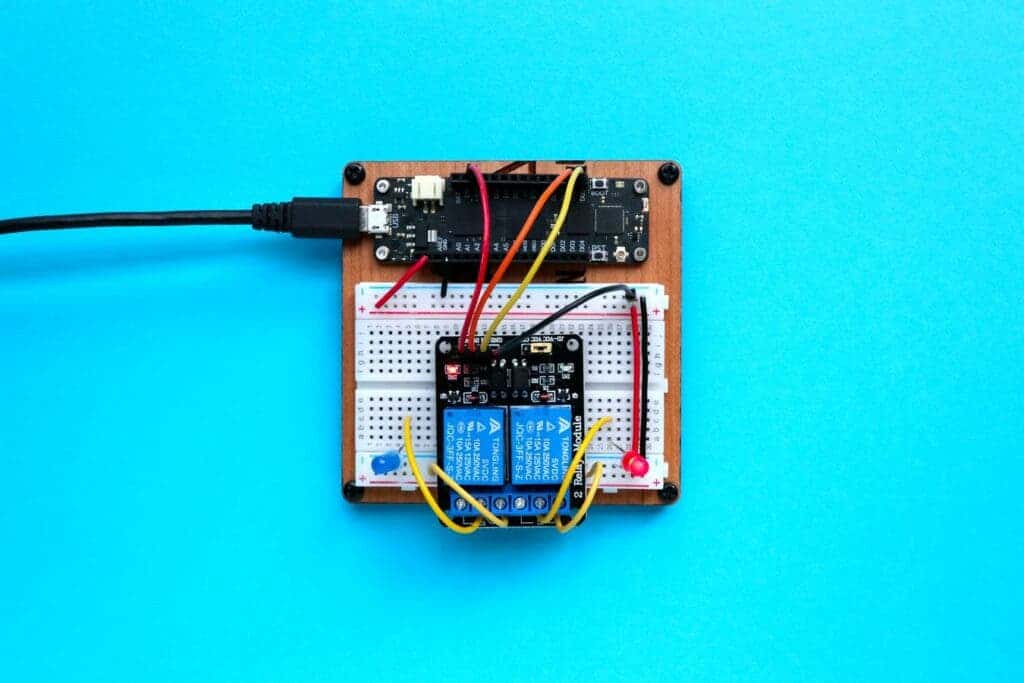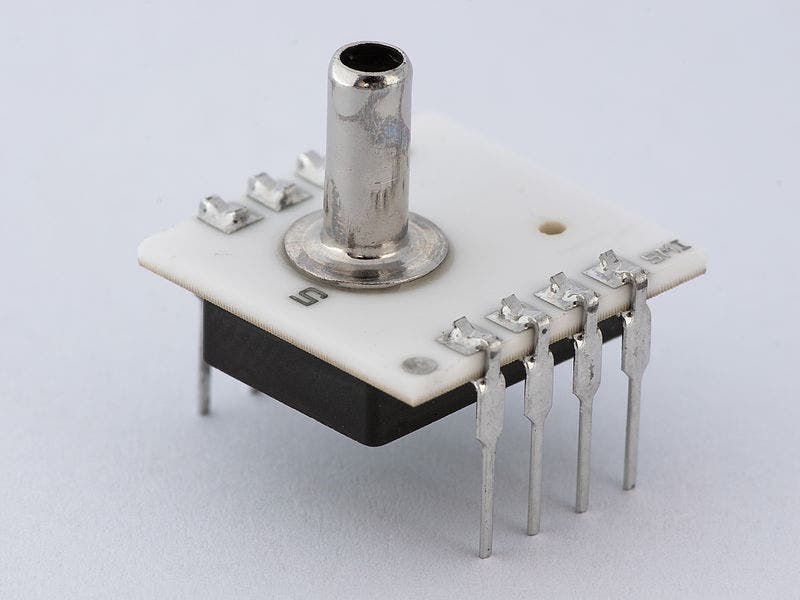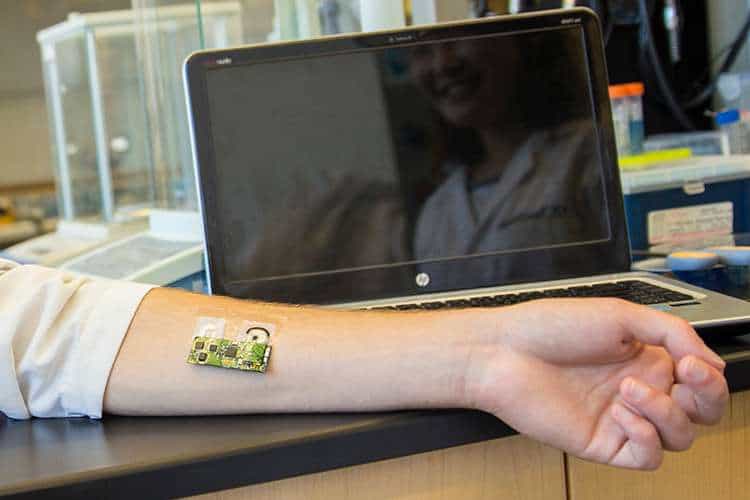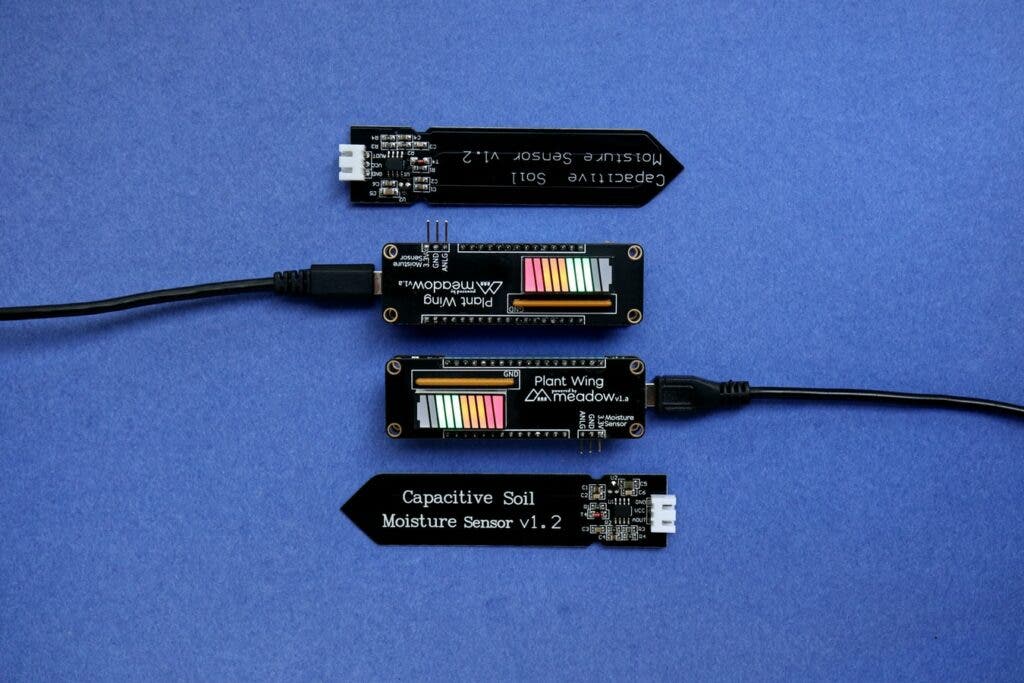A sensor is any device that measures an event or change in an environment and transforms it into an electronic signal that can be read and computed.
For instance, a sensor can take in physical parameters such as humidity, speed, or temperature (to name just a few), and make that data readable by a computer or other device. It takes an “input”, which can be almost anything, and converts it into an “output” that our electronics can understand. Or to put it in a different way, a sensor can detect an aspect of the physical environment and turn it into useful information.

Sensors, sensors everywhere — now also in XS size
We live in a world of sensors. From the tactile elevator buttons to the thermometers in our homes, they’re everywhere. Our smartphones, for instance, are equipped with an array of performant sensors. Whenever you fly a plane, there’s a whole arsenal there, telling the pilot everything about air pressure, speed, tilt, anything that can really help fly the plane.
Look around you (even ignoring the device you’re reading this on): how many sensors can you see around you?
At first glance, you may think there’s not too many. But look deeper. Are you in a car, or are there cars around you? Obviously, cars have a flurry of sensors, even the older ones. Public transit in many places is equipped with sensors. The thermostat inside the building — you’ve guessed it, also a sensor. In fact, it’s probably safe to say that unless you’re reading this while camping in the middle of nowhere, you’re probably surrounded by sensors that you don’t even notice.
It wasn’t always like this. Sensors used to be large, bulky, and expensive. Now, they’re small and easy to carry around. Researchers and engineers aren’t just looking at how well the sensor works — they’re looking at its energy consumption, necessary materials, sturdiness, and cost. Micro and nanotechnology and novel materials are making sensors smaller, smarter, and more adapted. As a result, we’re seeing sensors being applied in many new and exciting fields. For instance, some sensors can now be used as medical devices, either as wearables (for detecting things like glucose or insulin levels) or even inside the human body.
But before we get too carried away, let’s look at how sensors actually work.
How sensors work

You first start with something that you want to sense — the quantity you’re measuring. The human body, for instance, is great at sensing light (with our eyes), smells (with our nose), and tastes (with our mouth). In essence, our body is equipped with a set of sensors, but each carries out a specific task.
Similarly, if you want to build an electronic sensor, you first think about what you want to measure, or sense. Let’s say you want to build a light sensor. You need an instrument to transform light into an electrical signal. That instrument is called a photodiode, and it does just what you want it to do: it converts light energy into electrical current. But let’s dig a bit deeper: how does the photodiode do this?
Without going into too many technicalities, photodiodes are built from specific materials and when photons hit the surface of these materials, they create something called the photoelectric effect, which disrupts the previously stable energy configuration of the material. This can generate an electric signal which is then picked up (and sometimes amplified) so it can be read by the system.
If you want to build a motion sensor, you need different types of materials, that can produce small amounts of current when they are moved or distorted. The rest of the mechanism is the same.

So in essence, sensors generally work in a similar fashion: you need something (like a photodiode) that can transform your desired input into an electric current. You then pick up that electric current, amplify it if necessary, and pass it on to your computer.
A good sensor must have the ability to tell current very precisely. For instance, if the light increases slightly, so too will the current produced by the photodiode, and the sensor must be able to tell this. The better the ability, the better the sensitivity. But sensors also need to be able to withstand vibrations and temperature changes, which often affect the quality of the output.
Types of sensors

Sensors can be classified based on several different aspects. For instance, sensors can be either:
- active (which require an external signal); or
- passive (which work without any external signal).
Sensors can also be:
- analog (produce an analog output, ie a continuous signal); or
- digital (which work with discrete, digital data).
Most commonly, however, sensors are classified based on the physical property they measure. Here are some examples:
- light sensors (which we’ve already discussed) are used everywhere, including on phones;
- motion sensors;
- proximity sensors, which can use different physical methods, like optical with laser, ultrasonic, or capacitive, etc;
- temperature sensors;
- chemical sensors, which can work for various types of chemical substances, like alcohol, smoke or gas, for instance;
- humidity sensors (excellent for agriculture);
- tilt sensors.
The sensor world has never been so active and diversified, which is why many now believe that sensors will usher in a new type of technological revolution.
Internet of Things and beyond
Sensors are no longer used just in engineering — in medicine and biotechnology, they are important tools that measure biological or physical processes. Environmental science as we know it today wouldn’t exist without accurate sensors, and practically every field that needs physical information uses sensors to get it. Every smart object is smart thanks to its sensors, and the more we look around us, the more objects are becoming smart.
You may have heard of the Internet of things (or IoT) — the idea of having objects around us connected in an internet-like network. This would mean that the “things” would be embedded with sensors and software, and could communicate with each other. For instance, a smarthome is a great example of how the IoT would work: your smart thermostat would turn on the heat automatically once temperature falls below a certain value, or, say, 30 minutes before you leave work, so your home is nice and cozy when you arrive. Lighting would have sensors to detect and automatically turn off when not used, and smoke/gas detectors would constantly work in the background.
Of course, the smart home isn’t the only idea of the IoT. Driverless cars would also need to be connected to the IoT so that they don’t collide with each other and keep the drivers safe. Virtually everything that benefits from automation, from medicine to high-end technology, could benefit from an IoT approach. But for all of this futuristic stuff to work, you need accurate, robust, and connected sensors.
Our world is full of sensors, and it’s unlikely to change anytime soon — if anything, we can expect sensors to play an even more important role in our lives.


